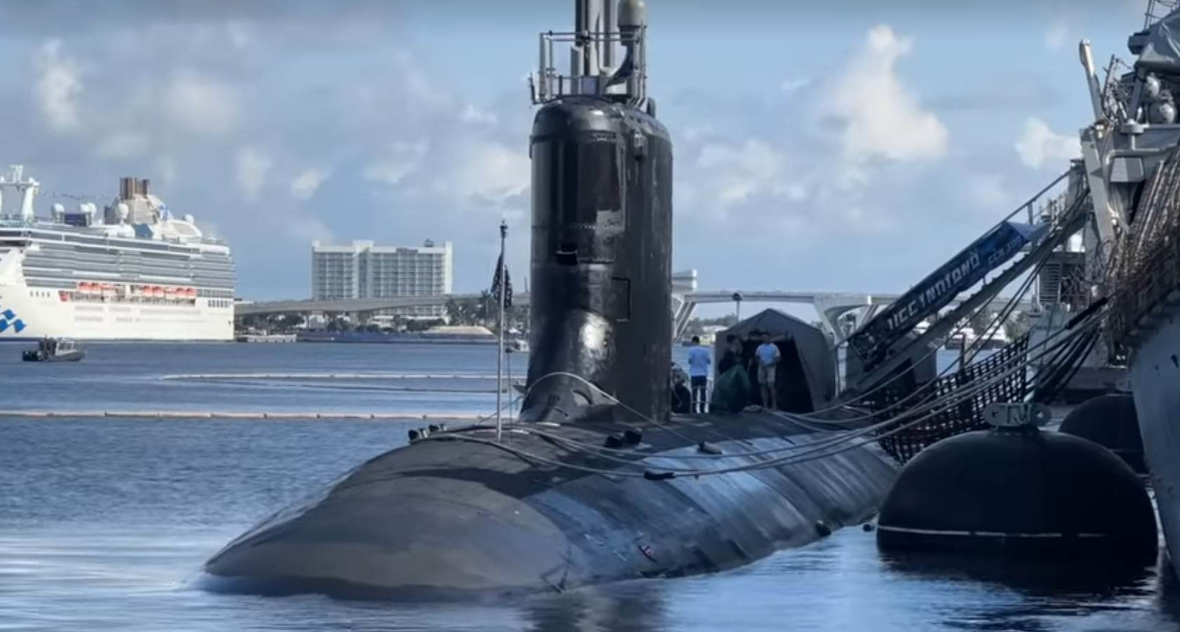
The Evolution of Submarines: From The Turtle to Typhoon & Beyond
Explore the fascinating journey of submarines, from their humble beginnings with “The Turtle” to the modern marvels like the “Typhoon.” Discover the evolution, innovations, and historical significance of these underwater vessels in this informative lesson of exploration.
Submarines have come a long way since their inception. In this lesson, we dive into the history, technological advancements, and significant milestones in the development of submarines. Join us on this journey to the deep and explore “The Evolution of Submarines: From The Turtle to Typhoon & Beyond.”
The Early Beginnings
The concept of submarines dates back centuries, with various inventors and visionaries contributing to its development.
Leonardo da Vinci’s Vision
Leonardo da Vinci, the Renaissance genius, sketched a design for a submersible vehicle in the 15th century. Although his design was never built during his lifetime, it laid the foundation for future submarine engineers.
The Turtle: America’s First Submarine
During the American Revolutionary War, David Bushnell created “The Turtle,” a one-man submersible. In 1776, it attempted to attach explosives to British warships. While not successful, it marked the birth of military submarine use.
The 19th Century Advancements
The 19th century witnessed significant strides in submarine technology. Inventors like Robert Fulton and Narcís Monturiol made notable contributions, with Monturiol’s “Ictineo” becoming the first functional combustion-powered submarine in 1859.
Submarines in World War I and II
The world wars were pivotal for submarine development and deployment.
World War I: U-Boats
German U-boats, or submarines, played a crucial role in World War I. They targeted Allied shipping, disrupting supply lines and shaping naval warfare strategies.
World War II: Submarine Warfare
World War II saw further advancements in submarine technology, with submarines like the German Type XXI U-boat and the American Gato-class submarines becoming instrumental in naval battles.
The Nuclear Revolution
The introduction of nuclear power revolutionized submarines, granting them unprecedented endurance and capabilities.
USS Nautilus: The First Nuclear Submarine
In 1954, the USS Nautilus, the world’s first nuclear-powered submarine, set sail. This technological marvel could stay submerged for months and travel vast distances without refueling.
The Cold War Submarines
During the Cold War, nuclear-powered submarines became symbols of military might and espionage. The Soviet Union’s Typhoon-class submarines, with their immense size and firepower, were particularly intimidating.
Modern Submarines: Typhoon and Beyond
Today, submarines are marvels of engineering, combining stealth, firepower, and endurance.
Typhoon-Class Submarines
The Typhoon-class submarines, developed by the Soviet Union, are the largest submarines ever built. These colossal vessels could carry ballistic missiles and served as a deterrent during the Cold War.
Los Angeles Class Submarines
The Los Angeles class of submarines, often referred to as the 688 class, stands as a testament to the United States Navy’s commitment to naval superiority. These nuclear-powered fast attack submarines, denoted as SSNs, have played a pivotal role in the Navy’s fleet since the early 1970s. Let’s dive deeper into the history and significance of the Los Angeles class submarines.
Origin and Development
The Los Angeles class submarines trace their lineage back to the lead vessel, the USS Los Angeles (SSN-688). From 1972 to 1996, a total of 62 of these submarines were constructed, with the final 23 representing an improved 688i standard. This series of submarines marked a significant leap in naval technology, combining nuclear propulsion with a robust armament, making them some of the most formidable warships in the world.
Enduring Service
As of the year 2022, an impressive 26 Los Angeles class submarines remain in active commission. This enduring presence in the U.S. Navy’s fleet is a testament to the reliability, effectiveness, and adaptability of these submarines. In fact, the Los Angeles class accounts for more than half of the U.S. Navy’s fast attack submarines, underlining their continued importance to national security.
Virginia-Class Submarines
The United States’ Virginia-class submarines represent the pinnacle of modern submarine technology. They are versatile, multi-mission vessels equipped for intelligence, surveillance, and reconnaissance.
Virginia Class Sub Overview
The Virginia class submarines are a prominent class of nuclear-powered fast attack submarines (SSN) in service with the United States Navy. These submarines have become a cornerstone of the U.S. Navy’s undersea warfare capabilities, designed to provide versatility and advanced technology for a wide range of missions. Here is a concise overview of the Virginia class submarines:
The Virginia class submarines are part of the U.S. Navy’s Seawolf-class successor program. They were designed to replace the older Los Angeles class submarines and are characterized by their advanced features and capabilities.
Construction and Production:
The construction of Virginia class submarines began in the 1990s. They are built by two primary shipbuilders, General Dynamics Electric Boat (GDEB) and Huntington Ingalls Industries (HII).
Advanced Design Features:
These submarines incorporate advanced design elements for stealth, agility, and adaptability. The Virginia class features a unique bow design with spherical sonar arrays, enhancing their sonar capabilities.
Armament and Mission Flexibility:
Virginia class submarines are equipped with vertical launch systems (VLS) capable of launching Tomahawk cruise missiles. They can carry torpedoes and other weaponry, making them versatile platforms for various missions, including anti-submarine warfare, intelligence gathering, and special operations support. The Virginia Payload Module (VPM) is a recent addition, increasing missile capacity
The Virginia class submarines represent the U.S. Navy’s commitment to maintaining a robust and technologically advanced undersea force. Their adaptability, stealth, and mission capabilities make them a vital asset in ensuring maritime security and protecting national interests.
Ohio-class Submarine
The Ohio-class submarine, a cornerstone of America’s naval prowess, represents the epitome of underwater warfare technology. These immense vessels have played a pivotal role in ensuring the nation’s security for decades.
The Birth of a Legend
The history of the Ohio-class submarine dates back to the Cold War era. Originally conceived as ballistic missile submarines (SSBNs), they were designed to carry a formidable payload of intercontinental ballistic missiles (ICBMs). This strategic move bolstered the U.S. Navy’s capabilities during a critical period of international tension.
Engineering Excellence
Ohio-class submarines are engineering marvels. With a length exceeding 560 feet and a beam of 42 feet, they are among the largest submarines ever built. They are powered by a nuclear reactor, which ensures they can remain submerged for extended periods, offering unmatched stealth and endurance.
Armament and Firepower
Armed with Tomahawk cruise missiles and torpedoes, Ohio-class submarines possess an incredible firepower that can be swiftly deployed. This capability serves as a strong deterrent against potential aggressors.
Watch & Learn More
FAQs
Q: What is the purpose of submarines? A: Submarines serve various purposes, including naval warfare, intelligence gathering, research, and exploration.
Q: How do nuclear-powered submarines work? A: Nuclear submarines use a nuclear reactor to generate steam, which powers a turbine connected to a propeller. This allows them to operate for extended periods underwater.
Q: Are there any civilian submarines? A: Yes, some civilian submarines are used for research, tourism, and underwater exploration.
Q: What is the role of submarines in modern navies? A: Submarines play a critical role in modern navies by providing strategic deterrence, reconnaissance capabilities, and the ability to engage enemy forces.
Q: How deep can submarines go? A: Submarines can reach varying depths depending on their design. Some military submarines can go as deep as 800 meters or more.
Q: What is the future of submarine technology? A: The future of submarines includes advancements in stealth technology, automation, and renewable energy sources to enhance their capabilities and reduce their environmental impact.
Q. How many Los Angeles class submarines were built and when? A: A total of 62 Los Angeles class submarines were constructed from 1972 to 1996. The latter 23 submarines were built to an improved 688i standard.
Q. How many Los Angeles class submarines are currently in commission? A: As of 2022, 26 Los Angeles class submarines remain in commission, which is more than any other class in the world. They constitute over half of the U.S. Navy’s 50 fast attack submarines.
Q. What is the naming convention for submarines in this class? A: Unlike the tradition of naming attack submarines after marine animals, the Los Angeles class submarines are named after American towns and cities. The only exception is the USS Hyman G. Rickover, named after the “father of the nuclear Navy.”
Q: How long can an Ohio-class submarine remain submerged? A: Ohio-class submarines can stay submerged for up to three months without surfacing, thanks to their nuclear power source and advanced life support systems.
Q: What is the maximum speed of an Ohio-class submarine? A: These submarines can reach speeds of over 25 knots (29 mph) when submerged, making them swift and agile.
Q: How many Ohio-class submarines are currently in service? A: As of the latest data, the U.S. Navy operates 14 Ohio-class submarines, with a combination of SSBNs and SSGNs.
Q: Can Ohio-class submarines launch nuclear missiles? A: Yes, the original purpose of Ohio-class submarines was to serve as nuclear deterrence platforms, capable of launching ballistic missiles.
Q: How deep can an Ohio-class submarine dive? A: These submarines are designed to operate at extreme depths, with the ability to reach depths exceeding 800 feet.
Conclusion
The evolution of submarines, from “The Turtle” to the imposing “Typhoon,” is a testament to human innovation and determination. These underwater vessels have played pivotal roles in history, shaping warfare, exploration, and scientific discovery. As we look ahead, the future promises even more remarkable advancements in submarine technology, ensuring their continued relevance in the ever-changing world of naval warfare and exploration.
You may also like: The War Under Water: Gato and Balao Class Submarines
Sources:
https://omsi.edu/exhibits/uss-blueback-submarine/
https://www.thoughtco.com/evolution-of-submarine-design-1992490
https://www.thecollector.com/history-of-submarines/
https://www.britannica.com/technology/submarine-naval-vessel
https://en.wikipedia.org/wiki/Turtle_(submersible)
https://www.youtube.com/@sciencechannel
https://en.wikipedia.org/wiki/USS_Blueback_(SS-581)

